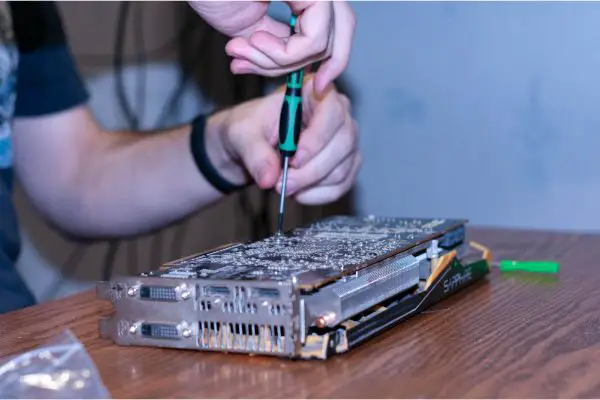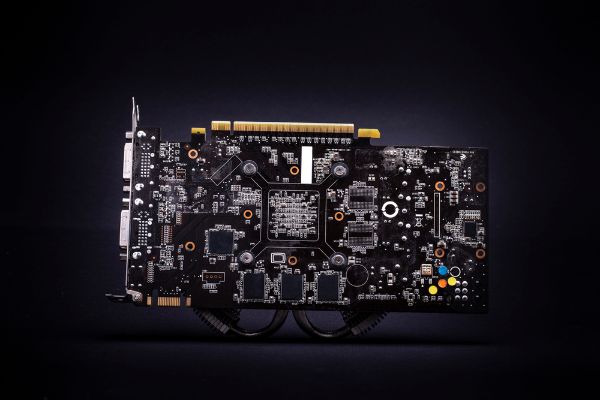Disclaimer: This post may contain affiliate links, meaning we get a small commission if you make a purchase through our links, at no cost to you. For more information, please visit our Disclaimer Page.
Your computer’s memory is a big part of how it is able to call up data, run processes or apps, and render the display for you. It can also determine how quickly or smoothly all of these things go. Your system has its own random-access memory, but a dedicated graphics chipset will have separate memory for resource-intensive displays.
This is the video random-access memory, and you can think of it as a sort of buffer between the CPU processing all of the data and the display that renders that data into understandable things. VRAM is crucial for gaming or other applications that rely heavily on graphics.
With all that in mind, some users might wonder if they could replace their VRAM for any reason. We can talk about whether this kind of video memory is replaceable, if different types of VRAM are interchangeable, how you might repair damaged or malfunctioning VRAM, and signs that can alert you to that damage.
We’ll also go over some common things that could cause video random-access memory to fail entirely.
Table of Contents
Can VRAM Be Replaced?
Generally, it is not possible to replace VRAM. If you have a dedicated graphics processing unit, the VRAM that it uses will be soldered in place.
This makes it nearly impossible to remove it as a way to replace it, and it is not meant to be something that the average user can remove.
You can still replace your VRAM in a technical sense, but you’ll need to get an entirely new GPU that comes with a greater amount of VRAM for that to work.
Swapping the chips on the VRAM may be possible, but this requires a special touch and a BGA rework station to get right. Because most people won’t have access to this, you won’t find many recommendations for replacing the VRAM this way.
Once the VRAM’s chips are soldered to the circuit board, the whole thing is placed inside an oven to melt the pieces together, thus bonding them strategically.
If you did want to replace the VRAM, you would have to get the old VRAM off without damaging the board to which it is attached. This can be a very painstaking and difficult process, so it could end up with most users having GPUs that no longer function.
There is also the price to consider. Even if you can access a specialist willing to take on this task, it could be prohibitively expensive for whatever budget you have.
You’ll be wanting to replace the VRAM to make the GPU run better, but the cost to do it this way might exceed some graphics cards that already have higher specs than your own. It may be cheaper to get an entirely new graphics processor.
Is VRAM Interchangeable?
VRAM isn’t usually interchangeable, but it can be. This is because the pinouts for certain kinds of VRAM are the same.
For example, you may find that all GDDR5 VRAM from different manufacturers is standardized to use the same pinouts.
Although it isn’t likely, it is possible that you could find cards from two different manufacturers that use their own chips, but they will both use the same circuit board.
In these cases, the VRAM is theoretically interchangeable, but you would still run into the abovementioned problems regarding replacing the VRAM.
Another problem is getting two kinds of VRAM that are technically interchangeable to work together properly. Your BIOS settings would need to be able to specify the correct timings for the VRAM you have in your system.
The BIOS would need to do this with both chipsets, and this might be difficult to do if different models or brands of VRAM are set up differently.
However, as long as both sets of VRAM can operate on the timings and frequencies that your graphics card would like to use, it is theoretically possible to use interchangeable memory in this way.
Whether that is possible or easy to accomplish practically might be another matter, especially for the average user or hobbyist.

(Attribution: ©[Viktoriia_P]/Depositphotos.com)
Can VRAM Be Repaired?
Much like any other component in a computer, it is possible that your VRAM could take some damage or fail to function properly at some point.
These failures could result from either physical problems with the chips themselves, or they could come from glitches in the software that cause the memory to function improperly.
In either case, there might be a few things you can do in order to repair it.
Before we get into some of the main fixes that you might be able to try, it is important to note that things could go wrong and make the situation worse if you’re not sure what you’re doing or which steps to try. Some things that might go wrong could include:
1. Accidentally overheating components near the chips, causing them to stutter or fail.
2. There are pads on the printed board that could sustain damage. This might happen most frequently when one accidentally shorts out the chips themselves.
3. Your graphics processing unit’s memory controller could have taken damage or it’s no longer usable.
4. Even if you can do a soldering job to repair or remove and reseat chips on the board, most of them can only take a few cycles of this before they are not good anymore.
Thus, doing any physical move or repair like this is limited in scope, and you should exercise caution.
All that said, there are also solutions within the software that you can look for, too:
1. You can try reinstalling the drivers. Sometimes, there is a glitch that will repair itself by a simple uninstall and reinstall of the graphics drivers. To facilitate this, go to your computer’s ‘Device Manager’ and look for the graphics drivers in the appropriate section.
2. Although it is a long shot, you can try either overclocking or underclocking the VRAM to see if there is any noticeable difference either way.
3. Maximize the Windows detection timeout and recovery settings to see if this will fix the issue.
4. Check any BIOS settings for abnormal readings. This will require knowledge of your BIOS and how your card should look when running normally.
There are also physical signs of damage that you can look for on the card, which might affect how the VRAM functions.
If you do find physical damage or loose connections, it is possible that you can fix these issues by resoldering some of the parts carefully.
How Do I Know if My VRAM Is Damaged?
Figuring out if your VRAM is damaged can be a tricky process. This is because any graphics-related errors you see in your visual display could also result from bad drivers or other software problems causing glitches.
Here, it means there are some fixes you can try that are related to updating or reinstalling software, but there is nothing wrong with the actual video random-access memory on the GPU board.
To determine if your VRAM could be at fault, you can look for physical signs of failure. VRAM chips that have taken physical damage like this may exhibit sparking or burning. In some cases, smoke may be involved as well.
If these things happen, you should remove the GPU immediately to avoid further hazards to the system. Your part may still be under warranty, but you should seek a replacement as soon as possible.
A lack of any display at all, or a lack of the POST could also indicate that VRAM on a dedicated card is not functioning at all. One of the ways you can test for VRAM damage is if you can swap the card into a different but similar system to your own.
If the tasks you want the card and VRAM to handle seem to go well when they’re in the new rig, it is possible that the issues you are experiencing are not related to any VRAM damage, particularly if you can’t find any physical signs of said damage.
What Causes VRAM Failure?
One of the main things that can cause VRAM failure is if there is a faulty physical connection between the chips and the board. The connections must be secure for everything to work, and anything out of place can cause the VRAM to fail.
You can fix this if you have the proper equipment and use a soldering iron to reattach things at the proper points.
In terms of non-physical failure, excessive heat on the graphics card over long periods can cause problems.
Your VRAM is not likely to fail, but if the GPU runs hot enough, it can snowball into the whole thing failing to boot. Most cards will have recommended settings for temperatures even when overclocking.
Conclusion
If you like to run modern games, or if you need smooth displays when dealing with lots of complex textures, properly functioning VRAM can be essential. It’s not something you can easily replace on the board, but it can usually take a lot of overclocking without damage.
Knowing some signs of physical or VRAM software failure can help you keep yours going until it is time to upgrade to the next graphics processor.

